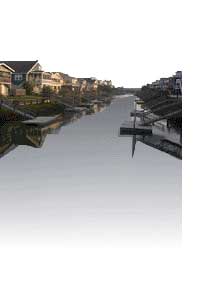THREATENED AND
ENDANGERED SPECIES
Most of Australia's GROUND
DWELLING MAMMALS depend
on food from the litter
layer,including
dunnarts,antechinuses,and
the planigales plus
bandicoots.
Shade is essential for the
survival of these species in
the drier areas.In cold
climates,if exposed to the
winter winds they need up to
about twice their usual food
to keep warm.Shelter from
trees & other plants
reduces heat loss.
About a third of Australia's
mammals live in trees
including
bats,possums,gliders,koalas,2
species of tree
kangaroos and several
species of native
rodent.Some TREE DWELLING
MAMMALS help pollinate
certain
trees and shrubs through
pollen sticking on their fur or
from their tongue as they
feed .
ENCOURAGING WILDLIFE
Wildlife on farms can protect
soil fertility and maintain the
health of shade trees
.Unproductive areas can
be valuable for wildlife.
A strategy can be developed
to include :
FENCING OFF REMNANTS of
the original native vegetation
INCLUSION OF APPROPRIATE
DIVERSITY of tree & shrub
species
CONSERVATION OF NATIVE
UNDERSTOREY
LEAVING OF OLD DEAD
TREES to provide nest
hollows for birds & mammals
ERECTING NEST BOXES IN
OTHER TREES
DEVELOPING FARM DAMS AS
SHARED HABITAT for wildlife
& stock
PLANTING CORRIDORS OF
TREES
ENSURING THAT NATIVE
VEGETATION ON
ROADSIDES,STOCK ROUTES
& STREAMSIDES IS MANAGED
PROPERLY.
Many species are rarely
sighted e.g. the hastings
river mouse,the narrow
nosed planigale,the parma
wallaby and the mountain
possum were all considered
extinct,until recently
rediscovered.
Landholders can help if they
keep a list of animals seen on
their land,plus any unknown
dead animals
should be collected or
photographed.
DID YOU KNOW? - over 50
species of Australian Animals
and nearly 70 species of
Australian plants are extinct.
Further,about 280 species of
native animals and over 1160
species of native plants may
become extinct in the near
future.
The Federal Government's
Natural Heritage Trust is
helping conserve and protect
our threatened species
through joint
programmes such as the
World Wide Fund for Nature
and the Threatened Species
Network.
DOLPHINS
ADOPT - A - DOLPHIN
For information on how you
can be part of this project
contact: THE PORT PHILLIP
BAY DOLPHIN RESEARCH
PROJECT Inc.
P.O.Box 774,Rye,3941
The dolphins that live in Port
Phillip Bay are "inshore
Bottlenose Dolphins".
Since 1982 researchers and
volunteers with the Port
Phillip Bay Dolphin Research
Project have been observing
the friendly
dolphins and their
environment.
RESEARCHERS spend many
months taking photos of
individual dolphins and
naming them for future
reference.
VOLUNTEERS assist marine
biologists by watching
dolphin behaviour and habits
and then file reports into a
database.
MEMBERS have taken an
active role in the
development of a CETACEA
INFORMATION & EDUCATION
CENTRE as a permanent
research facility.
WE CANNOT PHYSICALLY
"adopt - a - dolphin" as they
belong to everyone,but WE
can take an interest in
individual dolphins by
joining the ADOPT - A -
DOLPHIN campaign.
|
